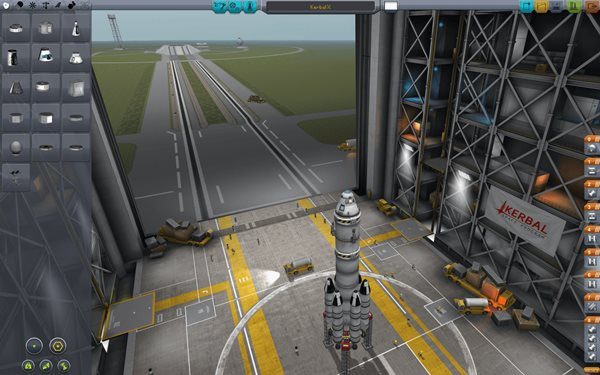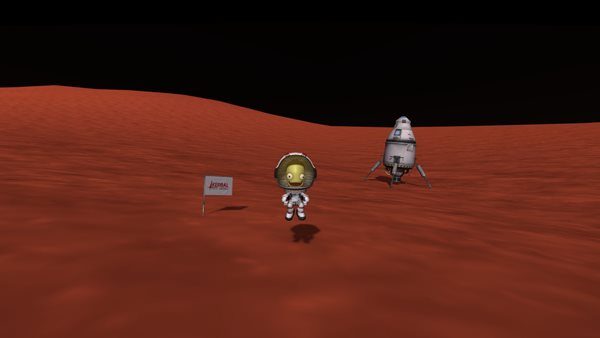Also On: PC, Xbox One
Publisher: Squad
Developer: Squad
Medium: Digital
Players: 1
Online: No
ESRB: E
By all accounts, Kerbal Space Program on PC is a must-play, a game that manages to take literal rocket science and make it fun and accessible even for those people who aren’t necessarily scientifically-inclined.
That description, unfortunately, does not apply to the PS4 version. It’s about as far from accessible as you can possibly get, which means, in turn, that’s it’s not particularly fun. The thing is, I can’t tell if my displeasure with the game is because I’m not smart enough to play it, or because it’s a lousy port.
There’s no reason why it can’t be both of those things, of course. Kerbal Space Program may essentially be rocket science for (kinda) dummies, but it still expects you to do a whole lot of reading and practicing in order for you to understand what you’re doing. This, after all, is a game where you’re building a space program from the ground up, doing everything from putting together the components in the right order as you build your ships, to launching them and getting them into orbit, to carrying out missions and tasks whilst in space, to safely guiding your astronauts back home. You need to balance your ship correctly, you need to make sure it burns fuel at just the right rate, you need to regularly correct your pitch and your yaw, you need to know when to decouple each stage; at each and every stage, there are countless things that can go wrong, and unless you’re thinking very carefully and paying very close attention, odds are good at least one of those things will go wrong — which, really, is just another way of saying you (or at least your ship) will literally crash and burn.
The only way to avoid is to take your time, plan things out, and, above all else, do the tutorials. As far as I’m concerned, however, it’s that last part — in the tutorials — where the line begins to blur between “Wow, I’m bad at this” and “this is a poorly-planned port job”.
See, it’s very clear that Kerbal Space Program was designed with a keyboard, mouse, and computer screen in mind. It demands a great deal of precision, and it gives you dizzying amounts of information, much of it conveyed through little buttons and dials. On both fronts, the problems are evident from the get-go. It’s much easier to be precise with a keyboard-mouse combo than it is with a controller, which will become painfully apparent to anyone trying to place thrusters and boosters and rockets just so. You can zoom in to an extent, but even that means relying on an incredibly finnicky camera. I’m sure there are people who can handle it, but even then I imagine it’s the kind of thing you’ll grudgingly tolerate, rather than something that becomes second nature.
Likewise, all that information is conveyed in one of two ways: either in a font so small you’ll be straining your eyes to figure out what it says, or — assuming you fiddle around with the UI settings in the controls — in boxes so large that they make it almost impossible to see everything you need to see. On a smaller computer screen this may be easier on the eyes, but here it’s just frustrating.
I should also note that, for all my complaints, the game’s performance wasn’t too much of an issue. It never crashed, nor did I experience the pain of losing all my progress. In this, unfortunately, my experience may have been atypical, as numerous people have found that — perhaps because of the sheer volume of information being processed — game-breaking bugs tend to pop up at the worst possible time.
As I said, however, that never happened to me, so I can overlook it. What I can’t overlook, however, is all the evidence that no matter how great Kerbal Space Program may be on PC, it just doesn’t belong on consoles.




